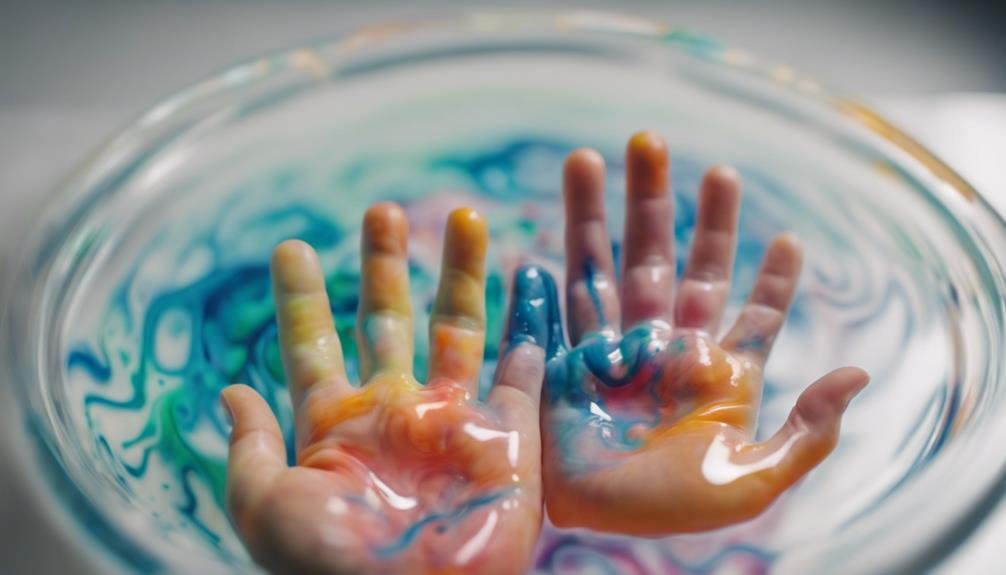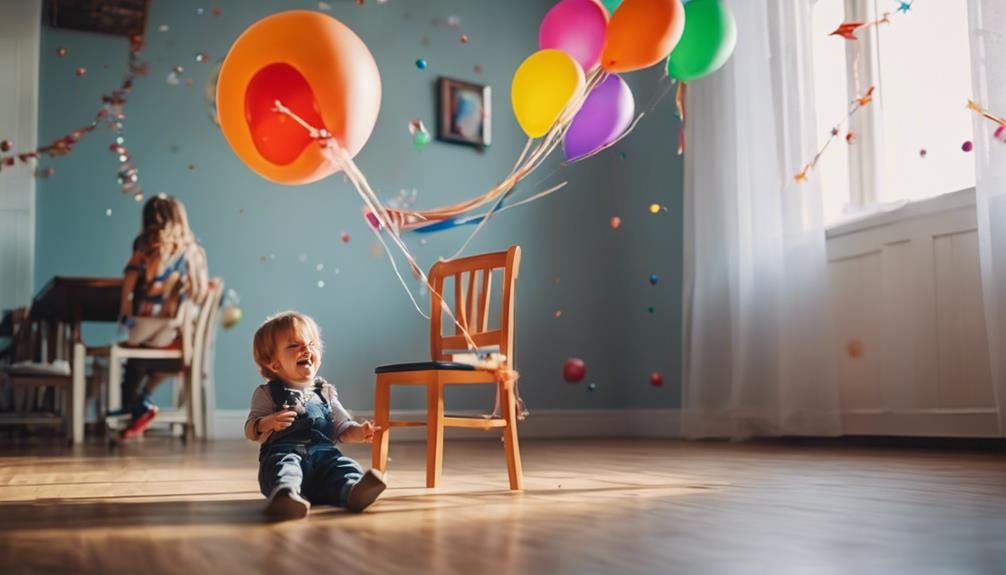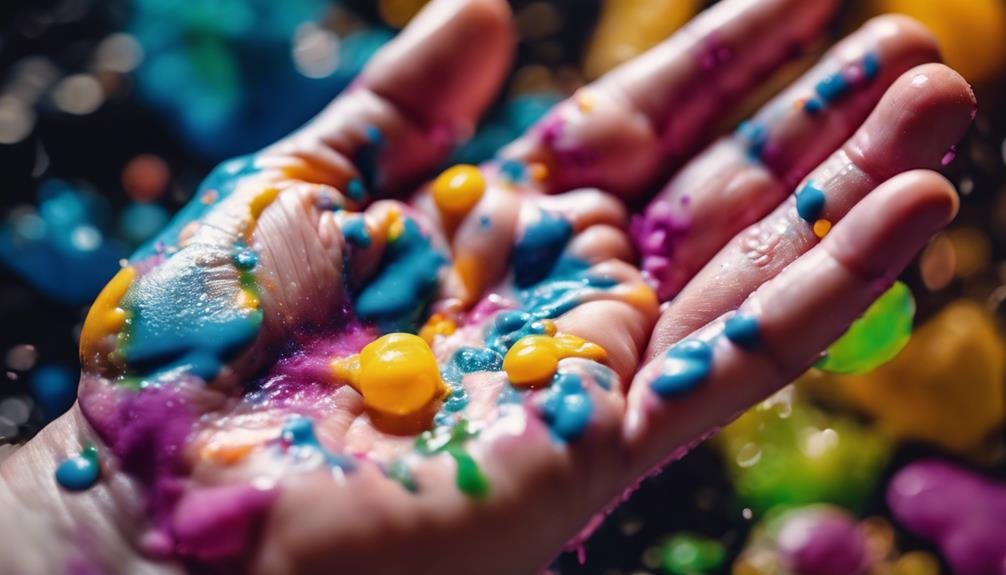"Cherishing Little Steps - A Haven for Baby and Family Journeys"
Science for Toddlers: Simple Experiments to Spark Curiosity
Did you know that children as young as two years old can begin to grasp basic scientific concepts through simple experiments? Imagine the wonder in their eyes as they witness everyday materials transform before them. These early experiences not only entertain but also lay the foundation for a lifelong curiosity and love for learning. By engaging toddlers in hands-on activities that stimulate their senses and creativity, you are not just entertaining them; you are fostering a budding interest in the world around them.
Key Takeaways
- Engage toddlers with colorful and fizzy reactions using baking soda and vinegar.
- Explore buoyancy with a sink or float activity using various objects.
- Create a magical milk experiment with food coloring and dish soap for swirling colors.
- Stimulate curiosity with a dancing raisins experiment using clear soda.
- Encourage sensory exploration through slime sensations with different textures and colors.
Colorful Fizzing Reactions

Get ready to watch vibrant colors mix and fizz in this fun and exciting science experiment for toddlers! To start this colorful adventure, gather a few clear containers, some baking soda, vinegar, and liquid food coloring. Place the containers on a tray or a protected surface to contain any spills.
Now, it's time to add a little magic! In each container, sprinkle a small amount of baking soda. Next, choose your favorite colors and add a few drops of liquid food coloring to the baking soda. Watch as the colors burst and spread, creating a mesmerizing display for your little one to enjoy.
The real fun begins when you pour vinegar into the containers. As the vinegar reacts with the baking soda, it will cause a bubbly, fizzy reaction. Your toddler's eyes will widen with amazement as they see the colors swirl and mix together, creating a mini fireworks show right before their eyes.
Encourage your child to explore and experiment with different color combinations, creating unique reactions each time. This simple yet captivating experiment is sure to spark their curiosity and love for science!
Dancing Raisins Experiment
Prepare to witness an enchanting display with the fascinating 'Dancing Raisins Experiment'! This simple experiment will captivate your little one as they observe raisins magically moving up and down in a glass of soda. Here's what you need to get started:
| Ingredients | Equipment Needed |
|---|---|
| Raisins | Clear Glass |
| Clear Soda | Spoon |
To begin, pour clear soda into the glass until it's about three-quarters full. Drop a few raisins into the soda using the spoon, and watch closely as they dance up and down. The bubbles in the soda attach to the rough surface of the raisins, causing them to float to the top. Once the bubbles pop at the surface, the raisins sink back down, creating a mesmerizing dance.
Encourage your toddler to hypothesize why this happens and ask them to count how many times a raisin can dance. This experiment is not only entertaining but also introduces basic scientific concepts in a fun and interactive way. Enjoy the show!
Magic Milk Experiment

Explore the next enchanting science experiment with your toddler – the 'Magic Milk Experiment' will amaze and engage your little one as they discover mesmerizing patterns in a simple and captivating way.
This magical activity only requires a few ingredients: milk, food coloring, dish soap, and a shallow dish. Pour the milk into the dish, add drops of different colored food coloring all around the surface, and then carefully dip a cotton swab soaked in dish soap into the milk.
As you touch the milk with the soapy cotton swab, watch in wonder as the colors swirl and dance before your eyes. The dish soap disrupts the surface tension of the milk, causing the colors to move and mix in a mesmerizing display.
Encourage your toddler to experiment with different swirling techniques and color combinations to create their own unique magic milk art. This sensory-rich experience won't only fascinate your little one but also introduce them to basic concepts of chemistry in a fun and interactive way.
Get ready to be spellbound by the enchanting magic milk experiment with your curious toddler!
Sink or Float Exploration
Ready to discover the mysteries of buoyancy with your toddler? Let's dive into a fun 'Sink or Float Exploration' activity to learn why some objects sink while others float. Grab a basin of water, a selection of items from around your home, and get ready for some hands-on science!
In this experiment, you and your little one will test different objects to see if they sink or float. Use this table to record your findings:
| Object | Sink or Float? |
|---|---|
| Toy Car | Float |
| Wooden Block | Sink |
| Plastic Spoon | Float |
Encourage your toddler to make predictions before testing each item. Ask questions like, "Why do you think the toy car floats?" or "What makes the wooden block sink?" This hands-on activity not only teaches basic scientific concepts but also promotes critical thinking skills in your child.
Through this simple experiment, your toddler will grasp the basics of buoyancy while having a blast exploring the wonders of sinking and floating objects.
Ice Cube Painting Activity

Curious about turning ice cubes into colorful masterpieces? Let's kick off the fun 'Ice Cube Painting Activity' that will have your toddler creating art with a cool twist! This activity isn't only a blast but also a great way to introduce your little one to the wonders of color mixing and the science of ice.
To get started, gather some ice cube trays, food coloring, popsicle sticks, and paper. Fill the ice cube trays with water, add a few drops of different food coloring to each section, and mix them gently. Insert a popsicle stick into each cube and place them in the freezer until they're solid.
Once the colorful ice cubes are ready, take them out and let your toddler paint with them on the paper. Watch as the ice starts melting, blending the colors together to create unique patterns and designs. Encourage your child to explore how the cold ice interacts with the paper and colors, sparking their curiosity and creativity. Enjoy this artistic and scientific adventure together!
Homemade Playdough Science
Ever wondered how you can combine creativity with science in a fun and hands-on way? Homemade playdough is the perfect activity to engage your toddler's curiosity and spark their interest in science. By making playdough together, you can explore concepts like measurements, mixing ingredients, and observing chemical reactions.
To create your own playdough, you'll need simple kitchen ingredients like flour, salt, water, oil, and food coloring. As you mix these ingredients, you can talk to your child about how the flour and water combine to create a new substance with its own unique properties. You can also experiment with adding more or less of certain ingredients to see how it affects the texture and consistency of the playdough.
Encourage your toddler to get hands-on with the playdough, shaping it, squishing it, and exploring its sensory qualities. Not only is this a fun and creative activity, but it also introduces your child to basic scientific concepts in a way that's both accessible and engaging.
Balloon Rocket Launch

Exploring the concept of propulsion can be both thrilling and educational for toddlers through a simple yet exciting activity known as the Balloon Rocket Launch. Are you ready to blast off into a world of fun and learning? Here's how you can do it:
Grab a long piece of string or yarn, tape it to a wall at toddler height, thread a straw onto the string, blow up a balloon, and attach it to the straw. Pull the balloon back, let it go, and watch as your rocket zooms across the room!
As the balloon deflates, it pushes air out backward, propelling the rocket forward. Toddlers will be amazed at how a simple balloon can create so much movement. Encourage them to experiment with different balloon sizes or lengths of string to see how it affects the rocket's speed.
This hands-on activity not only teaches about propulsion but also introduces basic concepts of physics in a fun and engaging way. So, get ready to launch your balloon rocket and spark your toddler's curiosity in science!
Rainbow Walking Water
Ready to create a colorful masterpiece with just a few simple materials and some science magic? Let's dive into the fascinating world of 'Rainbow Walking Water'! This experiment isn't only visually stunning but also a great way to teach your little one about color mixing and absorption.
To get started, you'll need some cups or glasses, water, paper towels, food coloring, and a sense of wonder. Fill the cups halfway with water and add a different color of food coloring to each cup. Place the cups in a row, leaving some space between them.
Now, fold a paper towel into a strip and place one end in a colored water cup and the other end in an empty cup next to it. Repeat this process for each color.
Watch as the water travels up the paper towel, carrying the colors with it, creating a magical rainbow effect. Your toddler will be mesmerized by the colors blending and moving. It's a simple yet enchanting way to introduce them to the wonders of science!
Sensory Slime Sensations

Let's now shift our focus to the sensory delight of creating 'Sensory Slime Sensations' following the vibrant exploration of 'Rainbow Walking Water'. Are you ready to dive into the squishy world of sensory slime? Get your little scientist's hands ready, and let's explore together!
Here are four exciting ways sensory slime can spark curiosity and wonder in your toddler:
- Texture Fun: Feel the gooey sensation as you mix ingredients to create different textures – from slimy to stretchy, there's a world of tactile exploration waiting for you.
- Color Magic: Watch as plain slime transforms into a colorful masterpiece with the addition of vibrant dyes. Let your toddler's imagination run wild with a rainbow of possibilities.
- Sensory Play: Engage all senses as you squish, stretch, and mold the slime. Encourage your little one to describe how it feels, smells, and looks.
- Creativity Unleashed: Use different tools and add-ins to customize your slime creations. From glitter to beads, the only limit is your imagination.
Get ready for a hands-on adventure with sensory slime sensations!
Baking Soda Volcano Fun
Get set to create an explosive eruption with your toddler by diving into the exciting world of Baking Soda Volcano Fun! This simple experiment will leave your little one in awe as they witness a mini volcanic eruption right at home.
To start, grab a small container and create your volcano shape using materials like clay or play dough. Place this on a tray or in a shallow container to catch the eruption. Next, add a tablespoon of baking soda inside the volcano. Now, for the magic touch – pour in some vinegar mixed with a few drops of food coloring. Watch as the vinegar reacts with the baking soda, causing a bubbling eruption that mimics a real volcano!
Encourage your toddler to observe closely, ask questions, and make predictions about what'll happen next. This hands-on experiment not only entertains but also introduces basic scientific concepts in a fun and interactive way. Get ready for some fizzy, bubbly, and explosive fun with your little scientist!
Frequently Asked Questions
Can Toddlers Do These Experiments Without Adult Supervision?
You should always have an adult supervise toddlers during experiments. It's crucial for their safety and ensures they get the most out of the experience. Shared moments of wonder and learning together create lasting memories.
What Are the Safety Precautions for These Experiments?
When conducting experiments with toddlers, prioritize safety. Keep small objects out of reach, use non-toxic materials, and supervise closely. Encourage curiosity while ensuring a secure environment. Remember, safety first for your little scientist's explorations!
How Can I Modify the Experiments for Children With Allergies?
If your child has allergies, swap out materials like using gluten-free flour for sensory play. Substitute safe ingredients to ensure a fun and safe experience. Always double-check for allergens and consult with a pediatrician.
What Is the Ideal Age Range for These Activities?
For these activities, the ideal age range is typically 2 to 5 years old. This age group is perfect for exploring simple scientific concepts through hands-on experiments that are engaging, fun, and tailored to their developmental stage.
Are There Any Alternative Materials That Can Be Used for These Experiments?
You can easily swap materials for these experiments! Try using items you have at home like cups, spoons, or even paper instead of the suggested ones. Get creative and see what fun results you can achieve!
Conclusion
Ready to spark your toddler's curiosity with simple science experiments?
From colorful fizzing reactions to sensory slime sensations, these hands-on activities are sure to engage their senses and encourage exploration.
So why wait? Dive into the world of science with your little one and watch as their inquisitive minds come alive.
Who knew learning could be this much fun? Get ready for a scientific adventure like no other!



Achieve Agricultural Excellence with Bwer Pipes: Unlock the full potential of your farm with Bwer Pipes’ premium-quality irrigation solutions. Our innovative sprinkler systems and durable pipes are designed to optimize water usage, improve crop health, and maximize yields, empowering Iraqi farmers to succeed in today’s competitive agricultural market. Learn More